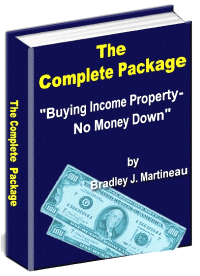The voluntary Model Green Home Building Guidelines are designed to move environmentally friendly home building concepts further into the mainstream marketplace. Currently, there are approximately thirty communities throughout the U.S. that have green home building programs in place or in development. By developing the set of voluntary national guidelines, NAHB intends to help facilitate the adoption of green home building practices and the formation of additional local programs in the parts of the country not currently served by programs.
In the spring of 2003, NAHB approved a resolution supporting green building. In response to NAHB member’s requests to provide the membership with technical guidance to support the new green building policy, NAHB tasked the NAHB Research Center to manage a project to develop national green home building guidelines.
The NAHB Research Center worked together in an open, public process with over 60 Stakeholder Group members from the home building industry to create those guidelines. The guidelines contain six primary sections:
Lot Preparation and Design - With lot preparation and design, the builder has opportunities to demonstrate environmentally sensible construction practices. Even before the foundation is poured, careful planning can reduce the home’s impact on vegetation, soil, water, plus a home’s long-term performance can be enhanced. Such preparation can provide significant value to the homeowner, the environment, and the community. Included for the end user, especially developers, is a Site Planning Appendix that closely mirrors this section and provides additional guidance.
Resource Efficiency ?This section shows how certain framing techniques and home designs can effectively optimize the use of building materials. Construction waste management concepts are also discussed. In addition, information is provided on how a home’s durability and the amount of time and money needed for maintenance are affected by how certain materials are used.
Energy Efficiency ?This is the most quantifiable aspect of green building. The information on this section will help a builder create a building envelope and incorporate energy efficient mechanical systems, appliances, and lighting into a home that will yield long-term utility bill cost savings and increased comfort for the homeowner. It contains the only requirements to participate in this voluntary program: compliance with the 2003 International Energy Conservation Code, use of ACCA manuals to size HVAC equipment, and 3rd party plan review to verify compliance with the section.
Water Efficiency/Conservation ?Although, the relative importance of water availability and usage varies from region to region, the concern with adequate supply of water is becoming more widespread geographically. Experience also shows that employing the line items from this section of the guidelines for indoor and outdoor water use can decrease a homeowner’s need for water and thus reduce utility bills, regardless of location.
Occupancy Comfort and Indoor Environmental Quality ?Details in this part of the guidelines will indicate how to effectively manage moisture, ventilation, and other issues in order to create a comfortable indoor living environment.
Homeowner Education - Given the level of effort a homebuilder goes through to create a well thought out home system, it would be a shame not to give the homeowner some guidance on how to optimally operate and maintain the house. Line items from this section show a builder how best to educate homeowners on a variety of homeownership matters.
Each section contains a set of provisions that explain how a builder can incorporate green building concepts into a project. In addition, local builders and green building program developers may apply points to the provisions to further define green building through a scoring methodology currently being developed. Local homebuilder associations will be given a user guide that will provide additional information and guidance on ways to customize the guidelines to accommodate local conditions.
The draft presented at Fall Board in Columbus, OH was a piloting version for dissemination amongst HBAs and builders for accuracy and practicality. A number of HBAs and High Production Builders have expressed an interest in helping NAHB to pilot test the document. The deadline for pilot testing was December 1st and the final version will be rolled out during the 2005 IBS in January in Orlando, FL. Currently, NAHB staff from the Energy and Green Building Dept. are traveling throughout the country presenting the guidelines to builders and HBAs who have expressed an interest in implementing green building in their respective businesses/communities. To date over 20 HBAs have voiced their interest and support, with many more to follow in the new year.
In summary, the voluntary Model Green Home Building Guidelines are for the mainstream home builders, many of whom are already incorporating some green building methods and materials into their construction practices. These voluntary guidelines will help systematize the green design and construction process and assist the builder toward incorporating more green building features into homes. As NAHB Research Center data indicates that there is a growing number of green homes built annually, it is expected that these voluntary guidelines will help builders meet the needs of this growing market.
Neda Dabestani-Ryba is a licensed Realtor in Maryland. She is a member of the President's Circle of Top Real Estate Professionals. She can be reached at (800) 536-3806 or visit her website for more information: http://neda.dabestani.pcragent.com/
Prudential Carruthers REALTORS is an independently owned and operated member of Prudential Real Estate Affiliates, Inc., a Prudential Financial company. Equal Housing Opportunity.
Article Source: http://www.valuablecontent.com

